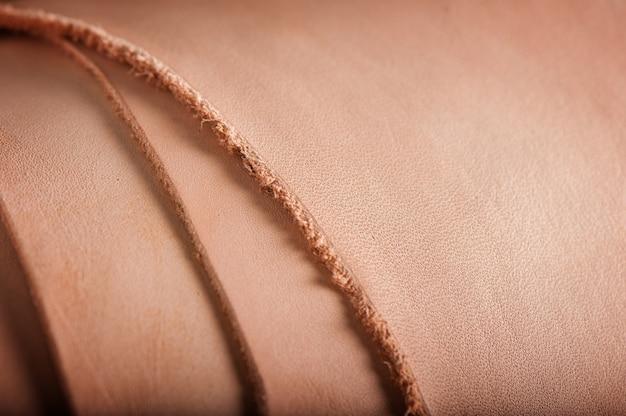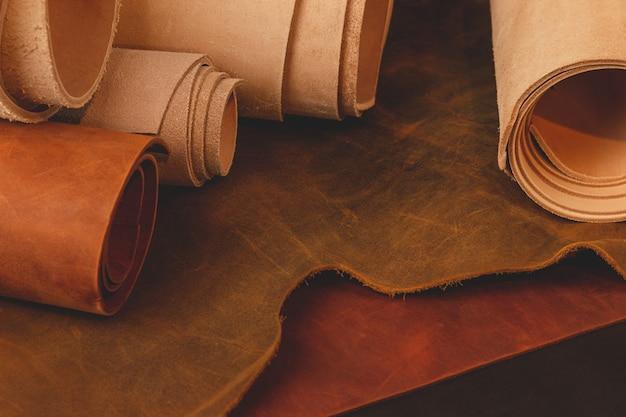Leather has been a staple material for centuries, known for its durability and timeless appeal. But have you ever wondered how leather is made? Specifically, how long does it take to transform raw animal hides into the rich, supple leather we know and love? In this blog post, we’ll delve into the fascinating world of leather tanning and answer all your burning questions about the process.
From the traditional methods of tanning used in ancient times to the modern techniques employed by today’s tanneries, we’ll explore it all. We’ll also discuss the different types of tanning, such as the chrome tanning process and natural tanning methods. So, whether you’re curious about how long it takes to tan a hide or want to learn about the environmental impact of tanning, we’ve got you covered. Join us on this leather-filled journey through time and tradition!
How Long Does It Take To Tan Leather
Tanning leather is an ancient art that transforms raw animal hides into beautiful, durable material. So, you might be wondering, how long does it take to tan leather? Well, it’s a process that requires patience, skill, and a little bit of chemistry. Let’s break it down step by step.
Prepping the Hide (Sorry, Bambi!)
Before the tanning process begins, the hide needs some serious cleaning. No, we don’t mean sending it off to a day spa for a facial. We mean fleshing, soaking, and removing any excess fat and flesh. This typically takes around a couple of hours, depending on the size of the hide and your newfound skills as a hide whisperer.
Pickling Time – Raise Your Martini Glass!
Once the hide is all clean and ready, it’s time to pickle it. Don’t worry, we’re not talking about dunking it into a giant jar of vinegar. Pickling in the leather world means soaking it in a mixture of water and salt, along with some fancy-sounding chemicals. This is where acidity levels are adjusted, and the hide masquerades as a pickle for about 16-24 hours.
Make It Acidic – But Not Too Much!
After the pickling party, it’s time to lower the pH levels and create the perfect environment for tanning agents to do their thing. This process, fittingly named “acidification,” requires some fancy chemical footwork and usually takes around 6-10 hours. Think of it as the leather equivalent of finding your perfect balance of acidity after one too many cups of coffee.
Time for Some Tannin TLC
Now, here’s where the real magic happens. It’s time to introduce the tannins. These natural compounds found in trees, plants, and sometimes even in a cup of tea, work their charm on the hide, turning it into leather. Tannins and hide become besties during a relaxing bath that can last anywhere from several hours to a couple of days, depending on the desired level of suppleness and flexibility.
Lots of Waiting and a Dash of Patience
Once the tannins have worked their tannic wonder, it’s time to wait. And wait. And wait some more. The hide needs some quality alone time to dry and let the tannins do their thang. This can take anywhere from a few days to several weeks, depending on factors like humidity, temperature, and the hide’s thickness. But hey, good things come to those who wait, right?
Voila! Leather is Born!
Congratulations, you’ve made it to the final step. Your hide has undergone the transformative journey of tanning and is now a full-fledged piece of leather. It’s time for some finishing touches, like dyeing, buffing, and maybe even a little bit of leather whispering of your own. Once these details are squared away, your leather is ready to be crafted into a fabulous accessory, furniture, or maybe even a cozy pair of shoes.
In conclusion, the journey from raw hide to luxurious leather isn’t exactly a quick one. It involves careful cleaning, chemical baths, and some wait time for the tanning process to work its magic. So, grab a cup of tea, find your zen place, and embrace the beauty of patience as you watch your hide transform into a piece of leather art.
FAQ: How Long Does It Take to Tan Leather
What is the Chrome Tanning Process
Chrome tanning is a widely used method in modern leather production. It involves treating animal hides with chromium salts, which helps to stabilize and preserve the leather. The process typically takes a few days to complete, depending on the desired quality and thickness of the leather.
Do Tanneries Still Exist
Absolutely! Tanneries continue to thrive in the leather industry. These specialized facilities are crucial in transforming raw animal hides into the beautiful, durable leather products we know and love. From small-scale artisanal tanneries to larger industrial operations, the craft of tanning remains alive and well.
How Do Indians Tan Deer Hides
Native Americans have a long-standing tradition of tanning deer hides using various techniques. One common method involves removing the hair, soaking the hide in a mixture of water and brains (yes, you read that right!), and then stretching and scraping the hide until it becomes soft and supple.
Can You Tan a Hide with Olive Oil
While olive oil has its merits in the kitchen, it’s not the best choice for tanning leather. Tanning requires specific chemicals and processes to transform raw hides into durable leather. While olive oil may soften the leather to some extent, it won’t provide the necessary preservation and stability that traditional tanning methods offer.
How Do You Tan Leather
Tanning leather is a complex process that involves several steps, but it’s well worth the effort. First, the raw animal hide is cleaned and soaked to remove any impurities. Then, it goes through a process called “tanning,” where it is treated with chemicals to stabilize and preserve the leather. Finally, the leather is dried, softened, and finished to achieve the desired quality and texture.
Can You Wash Tanned Hides
While tanned leather is more durable and resistant to water compared to raw hides, it’s still not advisable to toss your tanned leather products into the washing machine. Instead, use a mild soap and lukewarm water to spot clean any stains. Proper care and maintenance will help extend the lifespan of your leather goods.
Why Do Brains Tan Hides
Brains might seem like an unusual ingredient in the tanning process, but they actually contain a natural substance called lecithin. Lecithin acts as an emulsifier, helping to bind fats and oils together, which aids in softening the leather. So yes, brains play a vital role in the traditional tanning process!
Why Is It Important to Tan Leather Before Selling
Tanning is crucial to transform raw hides into usable, long-lasting leather products. Tanning not only enhances durability but also improves the appearance, feel, and workability of the leather. Without proper tanning, raw hides would quickly decompose and become unusable. So, it’s essential to tan leather before selling it to ensure its quality and longevity.
Is Chrome Tanned Leather Toxic
There has been some concern regarding the toxicity of chrome tanned leather. While the tanning process does involve the use of chemicals, including chromium salts, modern tanneries follow strict regulations and guidelines to ensure the proper handling and disposal of these substances. So, as long as you purchase leather products from reputable sources, there should be no reason to worry about toxicity.
Can You Tan Leather with Urine
Ah, the age-old question! While urine was indeed used in traditional tanning methods, it’s not something you’ll find in modern tanneries. The process involved fermenting urine to produce ammonia, which helped soften the hides. Fortunately, we now have more effective and less stinky techniques to tan and preserve leather.
How Long Does Tanning Hides Take
The duration of the tanning process can vary depending on the type of leather, tanning method, and desired quality. On average, it takes anywhere from a few days to a couple of weeks to tan hides. Patience is certainly a virtue in the leather industry!
Was Human Urine Used to Tan Hides
Ah, the smell of history! Human urine was indeed used in the old days as a source of ammonia for tanning hides. Back then, resourcefulness knew no bounds! Fortunately, we can now rely on more refined methods and chemicals to accomplish the tanning process.
Can You Tan a Hide with Just Salt
Salt alone won’t do the trick when it comes to tanning. Salt is commonly used to cure and preserve raw hides before they undergo the tanning process. While it helps prevent decomposition, it doesn’t actually transform the hides into leather. Proper tanning requires a combination of chemicals and processes to achieve the desired result.
How Do You Tan Leather Naturally
If you’re a fan of all things natural, fear not! There are alternative methods to tan leather using plant-based ingredients like tree bark, leaves, and fruits. These natural tanning processes require more time and effort, but they can produce beautiful, eco-friendly leather that appeals to the environmentally conscious.
What is Soft Tanning
Soft tanning refers to a process that produces supple, flexible leather. It involves using oil or grease to lubricate and soften the leather fibers, making it more pliable. Soft-tanned leather is often used for garments, gloves, and other applications where flexibility is essential.
What is Wet Tanning
Wet tanning, also known as wet blue or wet white tanning, is a method commonly used for chrome tanning. As the name suggests, the hides are soaked in a solution containing chromium salts, resulting in a bluish or whitish appearance. This process allows the tanneries to preserve and transport the hides, ready for further processing.
What Does Tanning Leather Smell Like
Ah, the sweet scent of tanning leather! The odor of tanning can vary depending on the tannery and process used. Some might say it has an earthy, musky aroma, while others might simply describe it as “distinctive.” It’s an acquired smell, but for leather enthusiasts, it’s a nostalgic reminder of quality craftsmanship.
What Tanneries Soften Leather
Tanneries utilize a variety of techniques to soften leather, such as mechanical processes, chemical treatments, and applying oils or waxes. Softening the leather fibers helps enhance its flexibility and comfort, making it more enjoyable for everyday use.
How Did They Tan Leather in the Old Days
Back in the old days, tanning was a labor-intensive process. Different cultures and civilizations had their own methods, often involving natural materials and substances like animal brains, urine, or vegetable tannins. The hides were hand-treated, scraped, and worked meticulously, showcasing the dedication and craftsmanship of the tanners of yore.
Now that you’re armed with knowledge about the tanning process and its peculiarities, you can appreciate the beauty and longevity of leather products even more. So the next time you slip into a cozy leather jacket or admire a finely crafted leather bag, remember the journey it took from raw hide to its ultimate form. Happy tanning!

